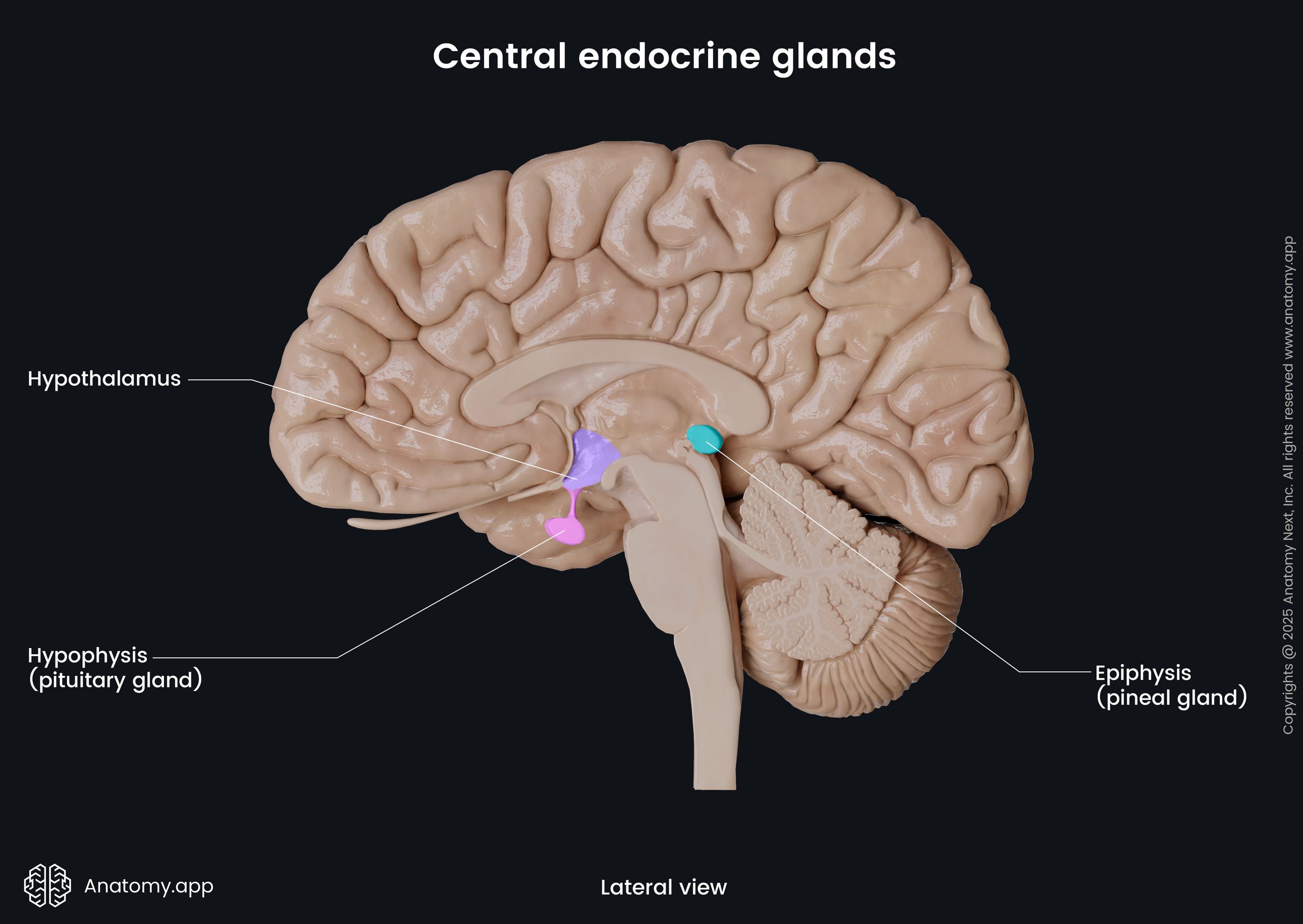- Anatomical terminology
- Skeletal system
- Joints
- Muscles
- Heart
- Blood vessels
- Lymphatic system
- Nervous system
- Respiratory system
- Digestive system
- Urinary system
- Female reproductive system
- Male reproductive system
- Endocrine glands
- Eye
- Ear
Endocrine glands
The endocrine glands are organs that synthesize and secrete biologically active substances called hormones, releasing them directly into the circulating blood.
The central endocrine glands are located in the brain and regulate the functions of many of the peripheral endocrine glands. The central endocrine glands include the following:
- Hypothalamus
- Hypophysis (pituitary gland)
- Epiphysis (pineal gland)

The peripheral endocrine organs can be divided into two groups. The first are the endocrine organs that are subordinated to the hypothalamic-pituitary system, and they include:
- Thyroid gland
- Cortex of suprarenal gland
- Testis (in males)
- Ovary (in females)

The second group includes the endocrine glands that are not directly controlled by the hypothalamic-pituitary system, such as:
- Medulla of suprarenal gland
- pancreatic islets
- Thymus
- Parathyroid glands